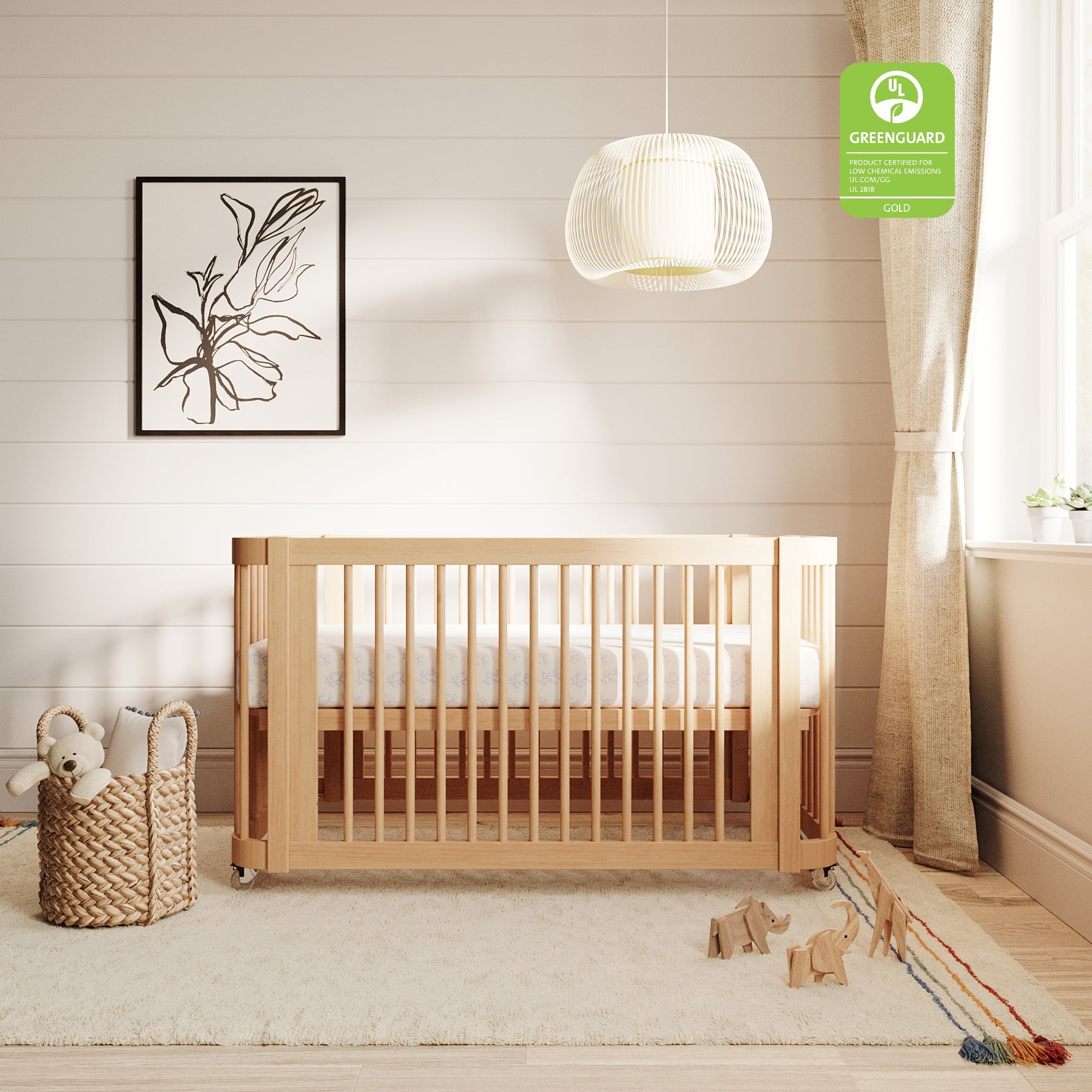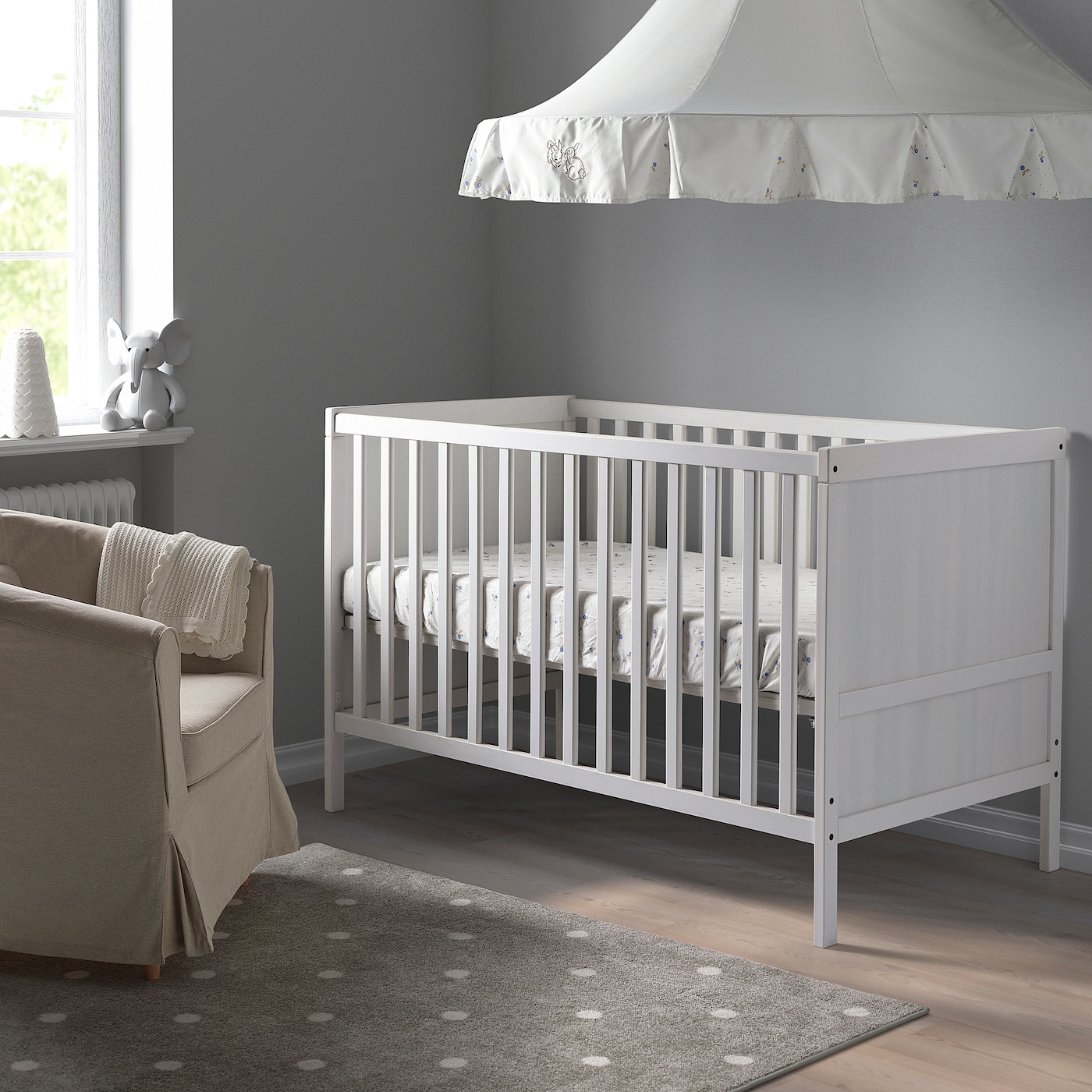Introduction: Providing a Safe and Comfortable Sleeping Environment
As new parents, one of the most important decisions you’ll make is choosing the right sleeping solution for your baby. Both cribs and bassinets offer safe and comfortable environments for infants to sleep, but each has its own unique features and benefits. In this guide, we’ll explore the differences between cribs and bassinets to help you make an informed decision about which option is best for your little one.

Understanding Cribs: The Nursery Essential
Cribs are a staple of any nursery and provide a safe and secure sleeping environment for infants and toddlers. Here’s what you need to know about cribs:
- Size and Durability: Cribs are typically larger and more durable than bassinets, making them suitable for long-term use as your baby grows. They are designed to accommodate standard crib mattresses and provide ample space for your baby to move and stretch.
- Safety Features: Modern cribs are required to meet strict safety standards to protect infants from hazards such as entrapment, suffocation, and falls. Look for cribs that are certified by safety organizations such as the Juvenile Products Manufacturers Association (JPMA) and meet ASTM International safety standards.
- Convertible Options: Many cribs offer convertible features that allow them to be transformed into toddler beds, daybeds, or even full-size beds as your child grows. This versatility makes cribs a long-term investment that can adapt to your child’s changing needs.
- Fixed or Drop-Side Rails: Cribs may have fixed or drop-side rails, with fixed rails being the safer option. Drop-side cribs have been banned in the United States due to safety concerns related to entrapment and suffocation.

Exploring Bassinets: Portable and Cozy Sleeping Solutions
Bassinets are smaller, portable sleeping solutions that are ideal for newborns and younger infants. Here are some key features of bassinets:
- Portability: Bassinets are lightweight and portable, making them easy to move from room to room or even take on the go. This portability allows you to keep your baby close by during naps and nighttime sleep.
- Compact Size: Bassinets are smaller than cribs and take up less space, making them suitable for smaller bedrooms or apartments. They can be placed next to your bed for convenient nighttime feedings and comforting your baby during the night.
- Breathable Mesh Sides: Many bassinets feature breathable mesh sides that promote airflow and ventilation, reducing the risk of overheating and suffocation. This feature provides peace of mind for parents and ensures a safe sleeping environment for infants.
- Rocking or Swinging Motion: Some bassinets come with rocking or swinging features that help soothe fussy babies and promote sleep. The gentle motion mimics the sensation of being rocked in a caregiver’s arms and can help calm babies to sleep more quickly and easily.

Factors to Consider: Making the Right Choice
When deciding between a crib and a bassinet, there are several factors to consider ensuring you choose the right sleeping solution for your baby:
- Age and Size of Baby: Bassinets typically use for newborns and younger infants, while cribs are suitable for infants and toddlers. Consider your baby’s age and size when choosing between a crib and a bassinet.
- Space and Room Layout: Assess the layout of your nursery or bedroom and consider how much space you have available for a sleeping solution. Bassinets are ideal for smaller spaces or rooms with limited space, while cribs may be a better option for larger nurseries or bedrooms.
- Portability and Convenience: If you plan to move your baby’s sleeping area frequently or travel frequently, a bassinet may be the more convenient option due to its portability and lightweight design.
- Long-Term Use and Investment: Cribs offer long-term use and versatility, thanks to convertible features that allow them to grow with your child. If you’re looking for a long-term investment that will last for years to come, a crib may be the better choice.

Safety Considerations: Ensuring a Secure Sleep Environment
When it comes to your baby’s sleeping environment, safety is paramount. Both cribs and bassinets must adhere to safety standards to protect your little one while they rest. Here are some essential safety considerations:
- Mattress Fit: Ensure that the mattress fits snugly within the crib or bassinet without any gaps around the edges. Gaps can pose a suffocation hazard for infants.
- Firmness of Mattress: Choose a firm mattress for your crib or bassinet to provide proper support for your baby’s developing spine. Soft mattresses increase the risk of Sudden Infant Death Syndrome (SIDS).
- No Loose Bedding: Avoid placing loose bedding such as pillows, blankets, or stuffed animals in your baby’s sleeping area, as these can increase the risk of suffocation or entanglement.
- Safe Sleep Position: Always place your baby on their back to sleep, as this position reduces the risk of SIDS. Avoid side or stomach sleeping positions, even for short naps.
- Temperature Regulation: Ensure that your baby’s sleeping environment keep at a comfortable temperature, neither too hot nor too cold. Dress your baby in appropriate clothing and use lightweight bedding if necessary.
- Check for Recalls: Regularly check for recalls on your crib or bassinet to ensure that it meets current safety standards and has not been subject to any safety issues.

Transitioning to a Crib: When to Make the Switch
While bassinets are suitable for newborns and younger infants, there will come a time when your baby outgrows their bassinet and is ready to transition to a crib. Here are some signs that it may be time to make the switch:
- Weight Limit: Many bassinets have weight limits, and once your baby reaches this limit, it’s time to transition to a crib for safety reasons.
- Rolling Over: If your baby has started rolling over independently, they may no longer be safe in a bassinet, as the sides are lower than those of a crib, increasing the risk of falls.
- Length of Baby: If your baby is approaching the maximum length recommended for the bassinet, it’s time to consider transitioning to a crib to ensure they have enough space to stretch out comfortably.
- Developmental Milestones: As your baby becomes more active and starts pulling themselves up or attempting to climb out of the bassinet, it’s a clear sign that they are ready for the transition to a crib.
Conclusion: Prioritizing Safety and Comfort
In conclusion, both cribs and bassinets offer safe and comfortable sleeping solutions for infants, but each has its own unique features and benefits. When choosing between a crib and a bassinet, prioritize safety, comfort, and convenience to ensure the best sleeping environment for your baby. Consider factors such as age, size, space, portability, and long-term use to make an informed decision that meets your family’s needs. Whether you opt for a crib or a bassinet, providing a safe and comfortable sleeping environment is essential for your baby’s health and well-being.
